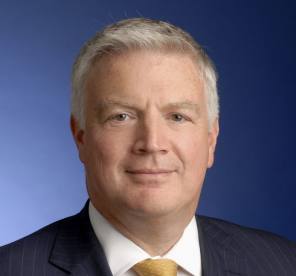

The rate at which individuals are using pension freedoms to access their pots has come as a surprise to the Office for Budget Responsibility, which now believes the government will make 400m a year more in tax than initially thought.
According to the OBR’s 220-page ‘Economic and Fiscal Outlook’, which was published alongside the Budget yesterday (March 11), the level of pension flexibility withdrawals “continue to surprise” official forecasters.
It was originally thought that those who were first able to take advantage of pension freedom reforms in 2015 would have slowed down their rate of withdrawal but instead the OBR has found savers continued to access their pension pot at a consistent rate.
The OBR stated: “The earliest cohorts have continued to withdraw funds at a consistent rate, whereas we had previously expected their withdrawals to have diminished by this stage.”
Due to this the OBR has increased its income tax forecast by £400m a year.
Between 2015-16 and 2018-19, pension freedom withdrawals raised £2bn (67 per cent) more in tax than originally predicted, with this trend continuing in 2019-20.
The government is also set to save £600m a year in state pension spending by 2023-24 due to increasing mortality rates.
Steve Webb, partner at pensions consultants LCP, said: “These figures show very clearly the continuing popularity of pension freedoms. Some of the tax boost will have come from people transferring out of their defined benefit pensions, and this trend is clearly slowing.
“But forecasters clearly still expect a steady stream of additional tax on flexible pension withdrawals. Although much is said about people spending down their pension pots too quickly, a major concern of regulators remains that people are taking money out of their pensions and then putting it into very low interest cash accounts.
“The government needs to do much more to understand how pension freedoms are being used to make sure that the regulatory regime remains appropriate."
The OBR also found that by raising the annual allowance taper threshold by £90,000 to reach £200,000, as announced yesterday, it will reduce the use of scheme pays by public service pension scheme members.
But the cost of scheme pays on the NHS scheme for 2019-20 will be higher due to the Secretary of State for Health and Social Care announcing that senior clinicians’ annual allowance charges in that year will be paid by the government and not the scheme members.
Scheme pays allows savers to settle annual allowance tax charges of more than £2,000 through the pension fund without needing to find funds upfront.
It is not yet known what the effect of this policy will be as, according to the OBR’s document, it depends on how clinicians respond to the offer, for example in terms of opting back into the scheme if they had left it to avoid such charges or increasing their hours if they had been turning down shifts for the same reason.
No information has been collected on the response to the policy since its announcement but its effect should be known by autumn, according to the OBR.
amy.austin@ft.com
What do you think about the issues raised by this story? Email us on fa.letters@ft.com to let us know.



